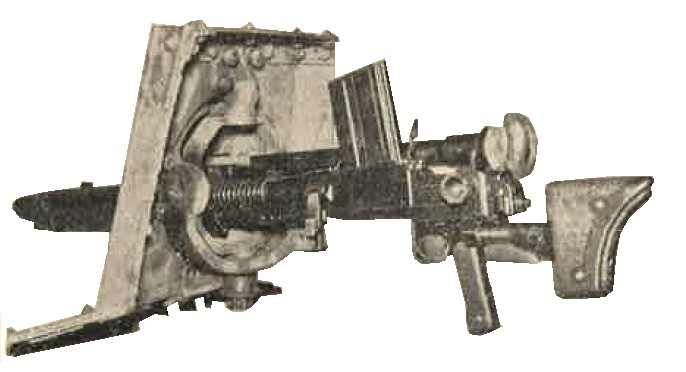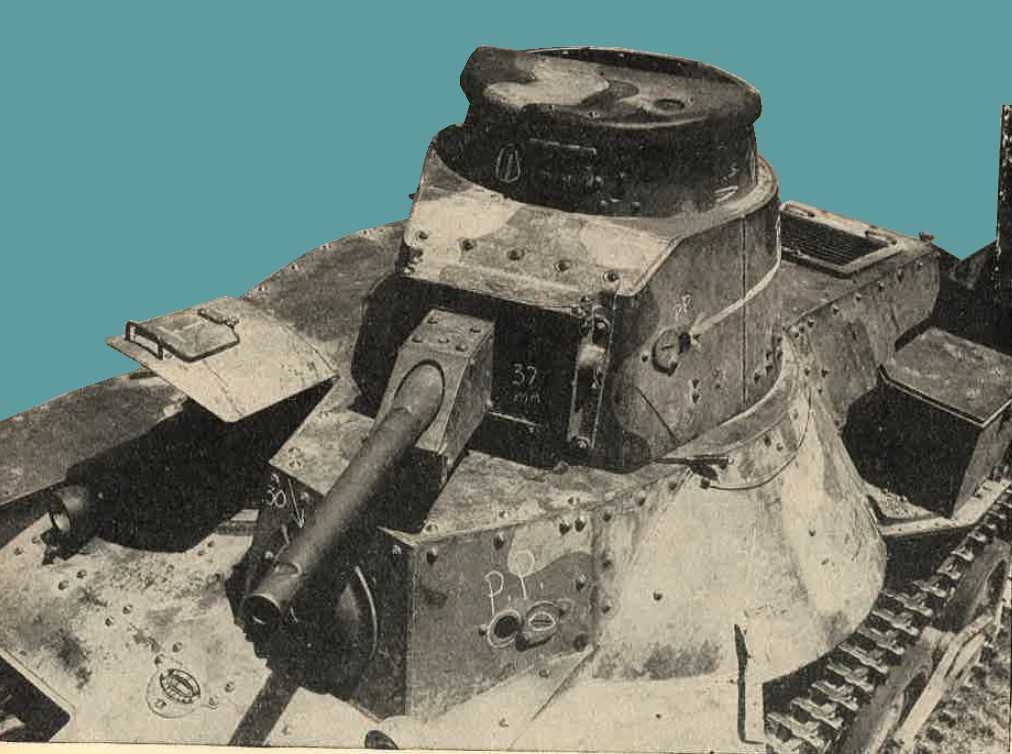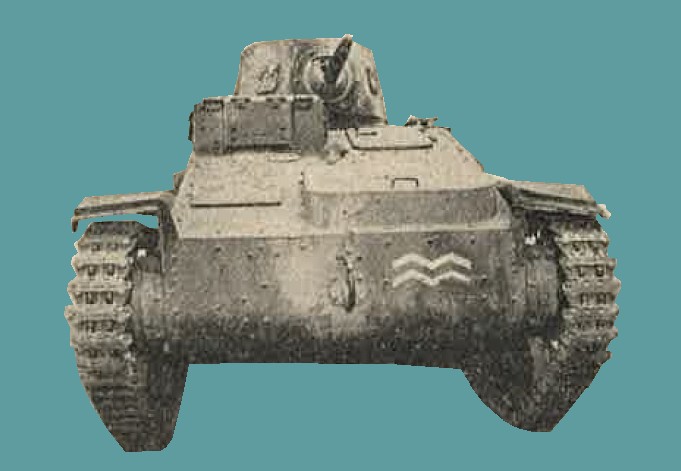CHAPTER 9 - JAPANESE WWII TANKS AND TANKETTES

SECTION VII - WWII JAPANESE ARMORED FIGHTING VEHICLES.
1. GENERAL.
a. Tank development.
Until 1929 Japan did not produce any tanks ( Sensha ) of her own. As usual, her ideas were borrowed from the West, particularly from the British and French, and her first tanks were versionsof early Renault, Vickers, and Carden-Lloyd models. Later she turned to Russia for new developments.
Prior to 1941 the Japanese had every opportunity to study and the experience of the Allies in war, and it is also reasonable to assume that they are still borrowing freely from other nations. What influence German design will have on future Japanese tank design and production is still to be seen. During 1935-37 the Japanese apparently were concentrating on tankettes, light tanks, medium tanks, perfecting one model in each class. It is probable that a few heavy tanks also were produced. Their tanks fall into four main types, divided according to weight. These are:
|
b. Tank nomenclature. For purposes of general information, an annoted photographs illustrating various items of tank nomenclature, is reproduced in figure 234. most Japanese armored vehicles can be identified by the oval manufacturer's name plates on the glacis plate, on the engine, and on the transmission housing of the vehicle.
 |
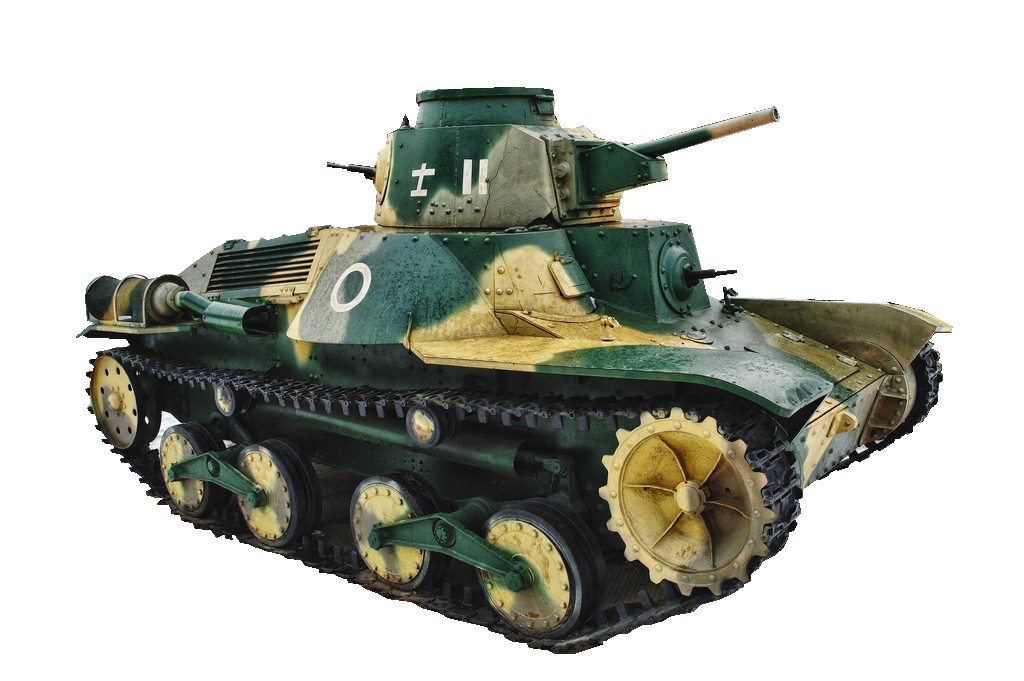 |
c. horsepower. Horsepowers indicated throughout the following text are all Japanese ratings. In each instance, engines have been examined (e.g. M 2595 Light Tank and M 2597 Medium Tank) it had been clearly shown that they are capable of developing a considerable greater degree of power than that reported. Consequently, wherever possible, theoretically indicated horse powers, derived from computations based on engine specifications, have been shown.
d. Crew compartment. Crew compartments thus far examined are limited in size, and little attention has been given to comfort. The turret and hull, however, have been found to be lined with asbestos or a like material, and this affords a reasonable amount of protection against heat readiation.
e. Armament.
g. Engines. Diesel engines of good design and operating efficiency are teh general rule in Japanese tanks. There is considerable concrete evidence of German influence in teh design and manufacture of these Diesel engines.
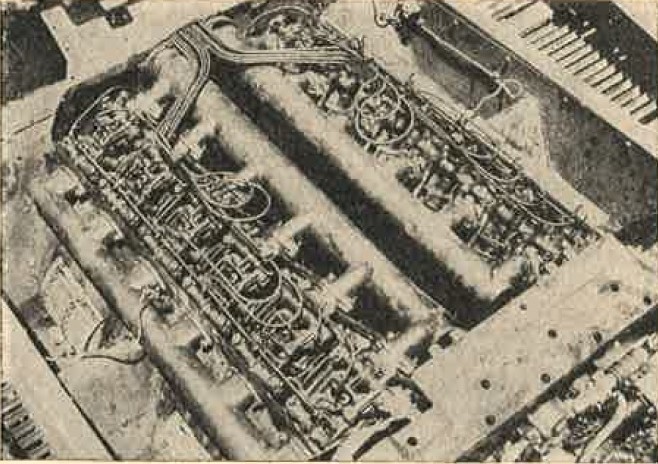
Figure 297. Engine of Type 97 medium tank improved.
h. Suspension. In the original early model Japanese tanks there were several attempts at varied types of suspension. Recent Japanese tanks, however, have used a modified Carden-Lloyd type of suspension. It may be expected that the basic ideas of suspension will remain the same with a few slight changes in keeping with the high power weight ratios.
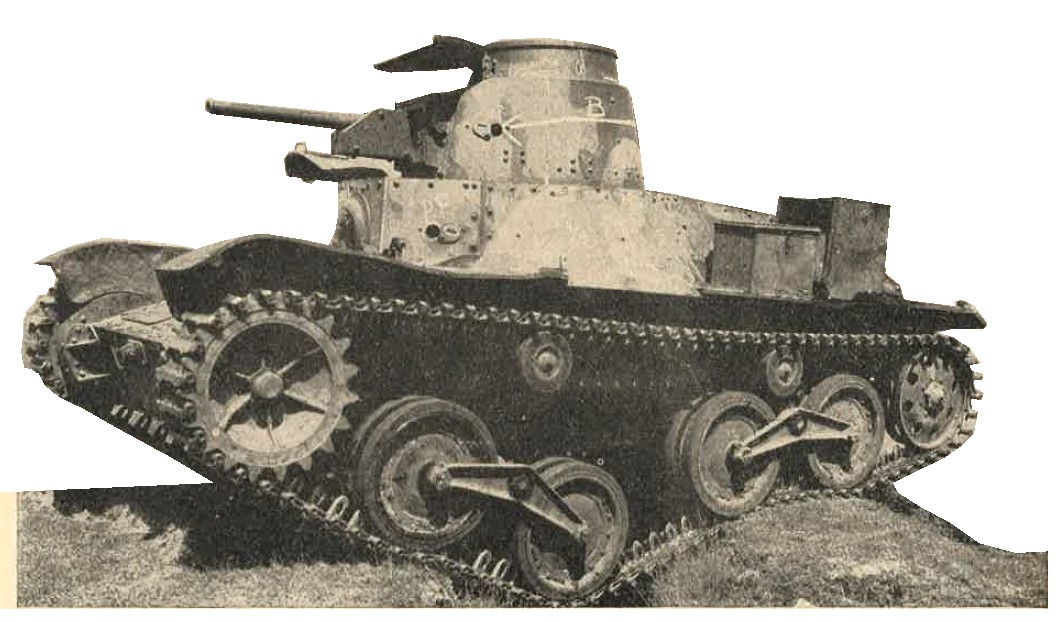
Figure 298. Modified Carden-Lloyd suspension of the Type 95 (1935) light tank in action.
i. Vision. The vision in Japanese tanks to date has been dependant on vision slits which recently have been backed by splinterproof glass. No noteworthy development has been made in the use of periscopes.

Figure 239. Type 97 periscope for Type 97 (1937) medium tank.
j. Escape hatches. There has been little development or provision for escape hatches.
k. Communications. Recent recoveries in the Philippines have shown an ever increasing Japanese realization that tank radio is invaluable, and obvious efforts to provide most of their tanks with radio of one type or another have been made.
l. Insignia. Army tanks have a 5 point star mounted on the front, whike navy tanks have the anchor insignia. Many tanks either fly or carry the national flag as an identification sign. Naval tanks usually have the small naval insignia painted on the sides. Tanks may be encountered either flying or carrying the national flag as an identification sign.
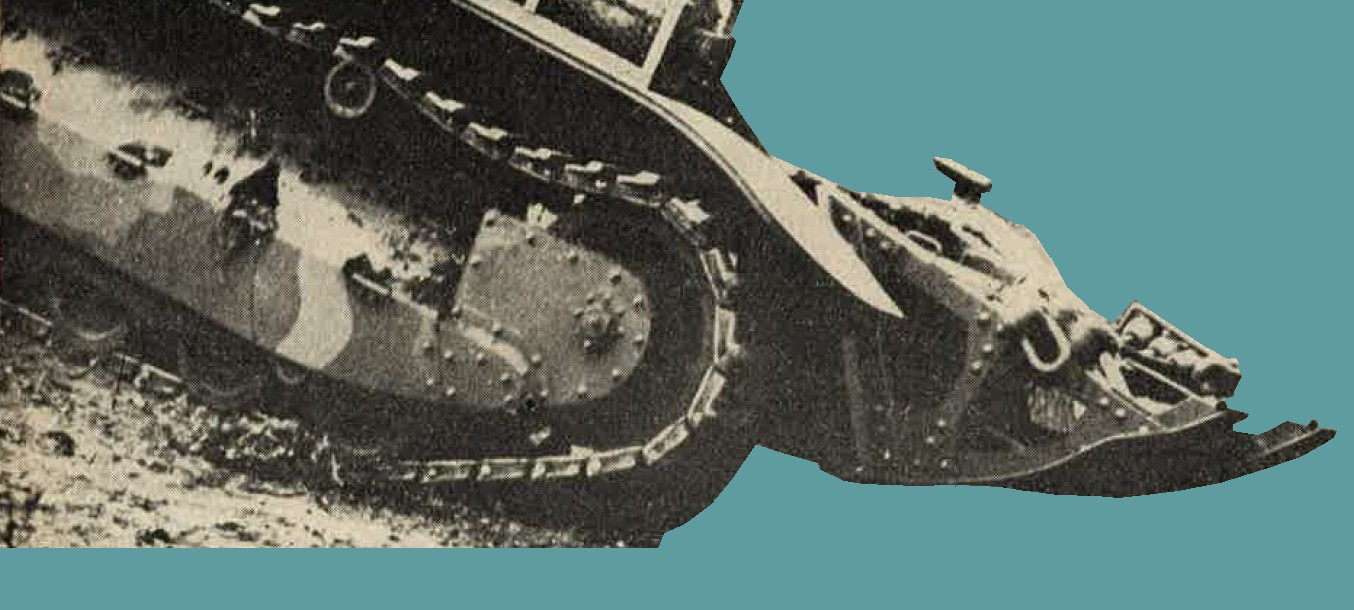
Figure 239. Model 95 light tank, illustrating curious items of tank nomeclature referred to in this section.
m. Future developments.
(1) General. The coaxila mounting of the machine gun in the amphibious tank is evidence of the fact that Japanese tank design is not stagnant. Evidence exists that Japan was in close touch with Germany, and Japanese tanks may show this influence in the future, when and if Japan can get her industry into production of a tank of German design and caliber.
(2) Self propelled guns. There undoubtedly will be a greater trend toward the development and use of self-propelled guns. Two types of such weapon are definetely known, and there is some evidence that future development is being considered by the Japanese.
(3) Armament. Tank guns of at least 75-mm caliber may be expected, and modern high performance AP and HE ammunition, as well as hollow charge types, will come into their own more and more as Allied armies press the war closer to the Japanese homeland. Some of he older 57-mm tank guns could be given new power with hollow charge ammunition.
Japanese tanks equipped with flame throwers have been encountered; the flame throwing tanks were first captured in the northern area of Luzon. However, there have been no reported instances of the Japanese using vehicle mounted flame throwers against U.S. troops.
(4) Armor. To date the Japanese tanks have not shown any trends toward the use of heavier armor. Yet this is a factor which undoubtedly has received some consideration, and, as a subtitute, spaced armor may be used. Future tanks may be expected to have better and heavier armor, with a good deal of stree laid on the elimination of reentrant angles.
(5) Performance. To date Japanese tank design has incorporated high power-weight ratios. This has resulted in high speeds and good cross-country mobility. If these are maintained, it may be expected that adequate performance will continue. Suitable modifications depending on tactical roles, may be undertaken to increase fording ability.
(6) Communications. Use of ratio may be expanded to include installation even in individual tanks, armored cars, and self-propelled gun carriages.
(7) Other improvements. Special items, like vision aids, escape hatches and air ducts or blowers to eliminate or diminish the amount of fumes caused by firing when the tank is buttoned up may be developed. Two of the recent Japanese tanks have shown a definite trend toward improvement in design: the Type 2 (1942) amphibious tank and the Type 97 (1937) improved medium tank. In these tanks some of the reentrant angles have been eliminated, while the overall design has been simplified. in addition, fire power has been increased by the use of a high velocity 37-mm weapon and a coaxially mounted machine gun in the Type 2 (1942) amphibious tank. The improved medium tank is armed with a new high velocity 47-mm tank gun.
(8) Heavy tanks. Undoubtedly the Japanese are capable of designning a heavy tank, but production of such a vehicle would be rather difficult. There are reports of a Type 2 (1942) heavy tank, but it has not been encountered. In the past, a number of heavy tanks have been produced in very limited quantities by the Japanese, but they must be considered obsolete.
n. Miscellaneous types.
There have been two recent recoveries of Japanese tank recovery vehicles, and there are reports which suggest the existence of repair and supply tanks.

2. WWII JAPANESE TANKETTES.
a. Japanese Type 92 (1932) tankette.
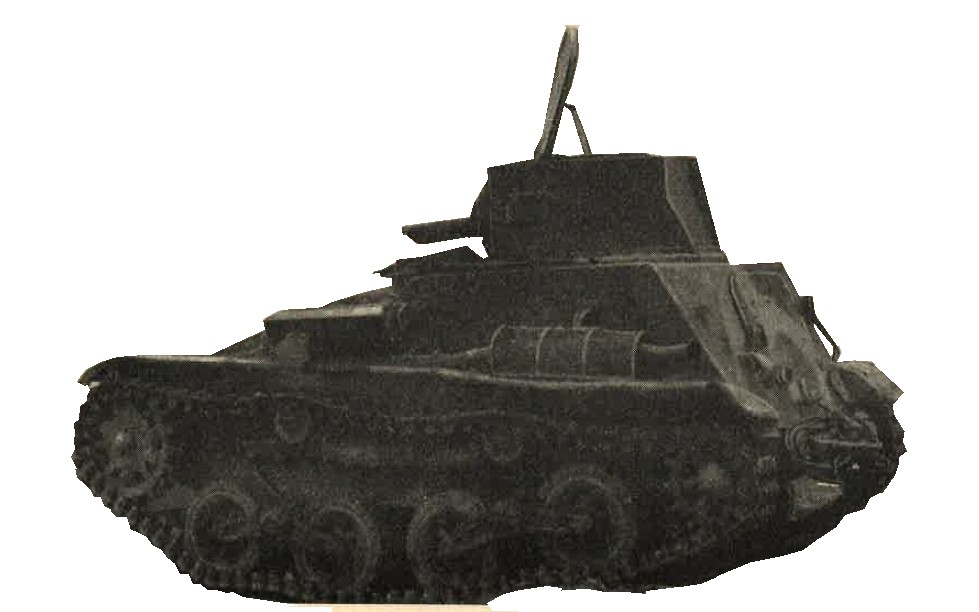
Figure 240. Model 92 (1932) tankette.
b. Japanese Type 94 (1934) Tankette.
The Type 94 tankette embodies the general design features of the Type 92 tankette with one major exception. The small rear idler on the Type 92 has been replaced by a large trailing idler on this more recent modification. The suspension is bell crank, resisted by armored compression springs. The engine is reported to be a Ford type tractor motor of 32 horsepower. It is armed with one machine gun.
The turret is constructed of rolled armoe plate and is mounted on a ball race. It is fitted with a mantlet for the machine gun, a turret traverse lock, an entrance hatch, two vision apertures, a gun sight aperture, and an aerial opening. Since there is no provision for a traversing gear, it is probably traversed by shoulder pressure against the machine gun.
Approximate specifications
|
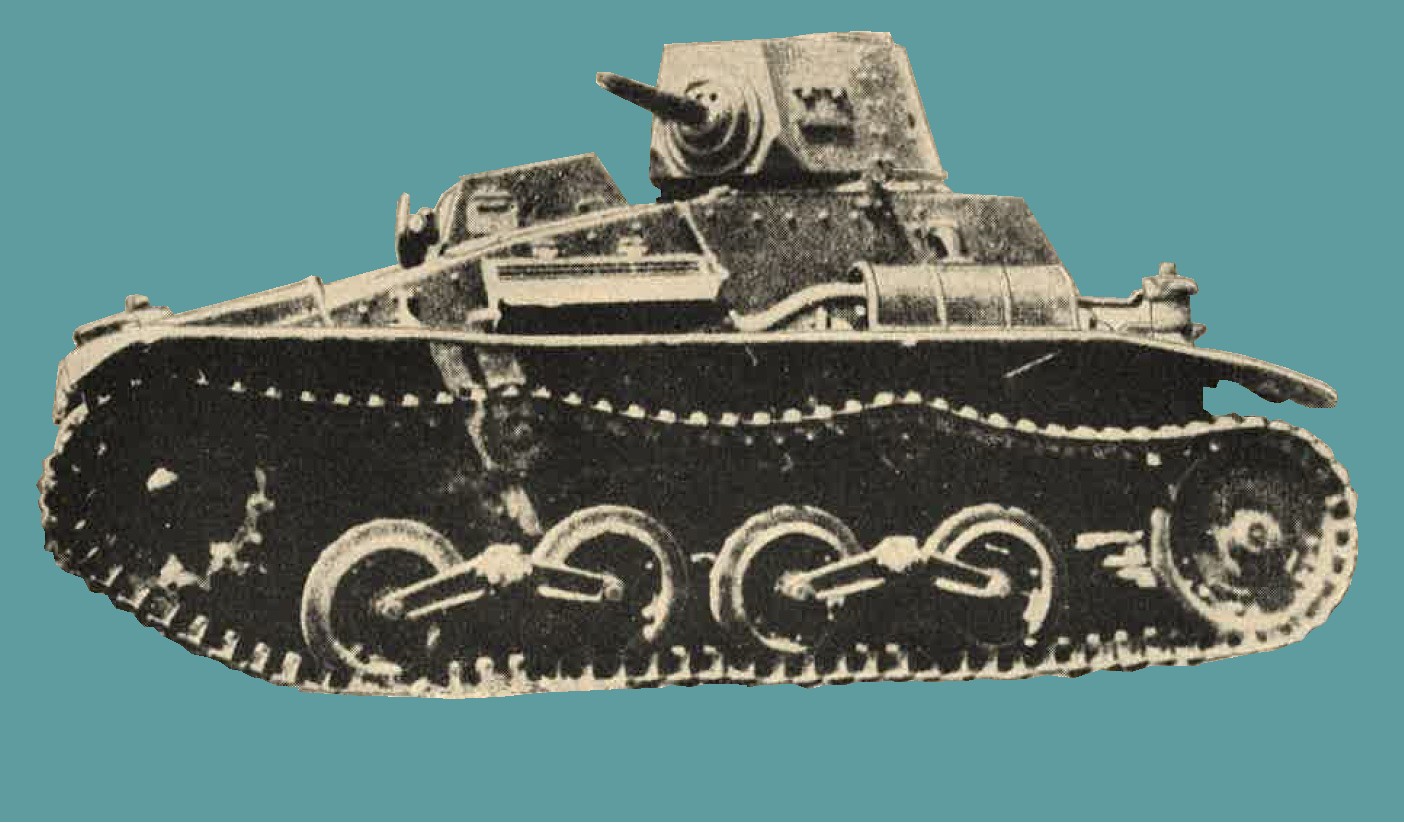 |
The hull is constructed of light armor plate. The inner surface of the plates surrounding the driving and fighting compartments and teh turret are lined with asbestos which act as a protective measure against heat radiation, both from the engine and the climate. On the front plate of the driving compartment, there are vision slits to the right and left; and in the inner flap door there is another vision aperture fitted with bulletproof glass. there is also a pistol port. In the front glacis plate there is a square access plate which can be lifted for checking the transmission. During travel this is kept locked.
The engine and the gasoline tank are located in the fighting compartment. Thus the engine auxiliaries are readily accessible from the driver's seat. The engine itself appears to be decidly old fashioned in design; it has for example, splash lubrication. This vehicle employs controlled differential steering. The design is quite straightforward, but the method of carrying the differential housing is worthy of notice - it is supported in plain bush bearings inside the sleeves of the control bevel wheel, which, in turn, are carried in ball bearings in the walls of the brake housing. Separate, taper roller, thrust bearings are provided. The steering brakes are of conventional toggle-operated, two shoe type. Since they are totally enclosed in a cast housing it would be expected that trouble would arise from overheating.
Engine and power plant :
|
Approximate maximum performance
|
The crew consists of two men: a driver and a machine gunner, who is also the tankette commander. The tankette is armed with a ball mounted Type 91 6.5-mm machine gun and possibly one other light weapon.
The suspension of this vehicle is a modification of the Carden-Lloyd type suspension. It employs front sprocket drive, a large trailing idler, and two return rollers. The four dual bogie wheels are resisted by armored compression springs. It would appear that the lateral rigidity of the bogie assembly would not be very great, and severe stresses might arise under adverse conditions.
c. Japanese Type 97 (1937) Tankette.
The Type 97 tankette is a light mechanized cavalry or reconnaissance vehicle. It is powered by a 48 - horsepower, four cylinder, in-line, air cooled, valve-in-head, Diesel engine. This tankette has retained practically the identical suspension of the Type 94 tankette.
The hull and turret, however, have been completely redesigned. More room has been provided in the turret to accomodate a 37-mm tank gun. As an alternative, a machine gun is sometimes mounted in place of the 37-mm weapon. This tankette shows a definite attempt on the part of the Japanese to design a simpler front plate and to improve the deflection angles of the armor.
|
The whole appearance of this tankette is one of better design and cleaner features in comparison with its predecessors,
the Types 92 and 94 tankettes. It employs front sprocket drive. Like the light medium tanks, it has a Diesel engine.
The turret of the Type 97 tankette is mounted on a ball race and is constructed of rolled armor plate. It has an all around armor thickness of 0.39 inch. A Type 94 37-mm tank gun or a Type 97 7.7-mm tank machine gun is mounted in the turret. It is lined with asbestos to protect the crew from heat radiation. The hull is also made of armor plate which is riveted and bolted together. The engine is located in the fighting compartment. It is a Diesel type which reduces to some extent the fire risks involved in having the engine located in the fighting compartment. The Type 92 and 94 have the gasoline engine in the fighting compartment which is somewhat of a fire hazard. 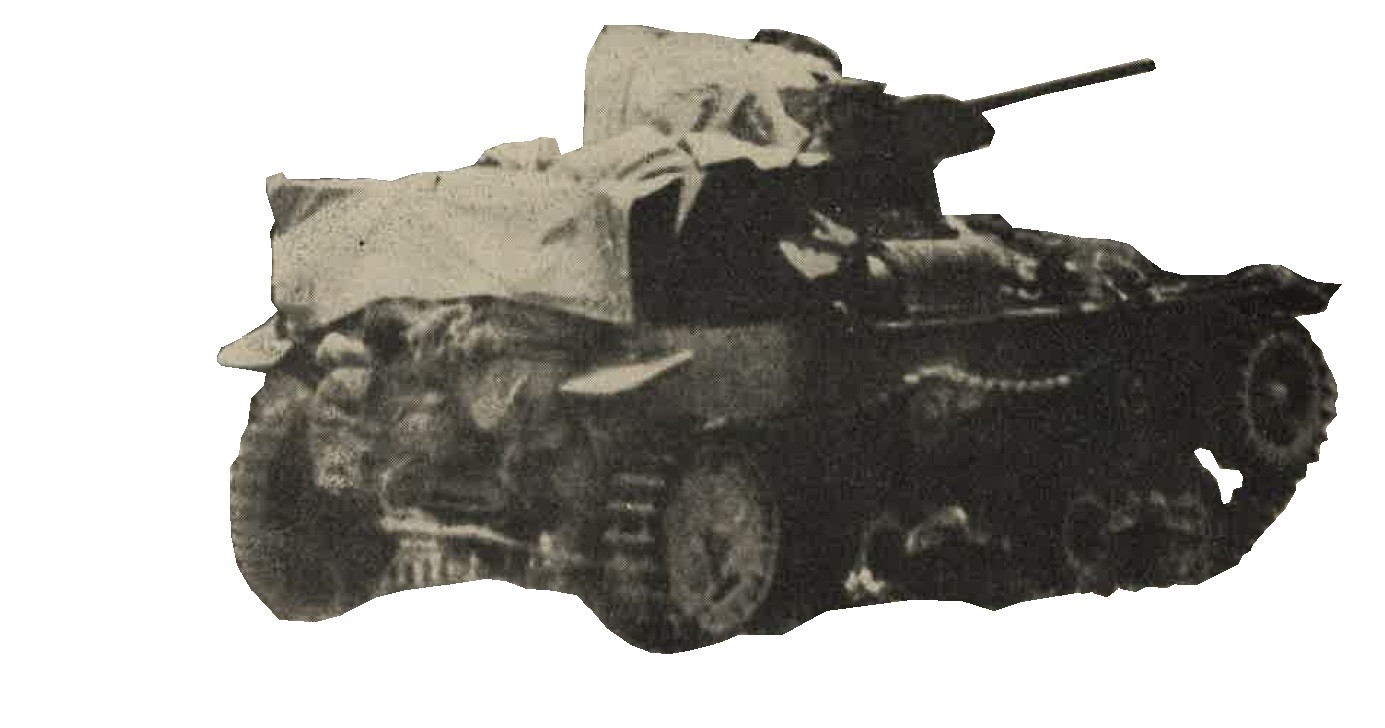
The suspension for the type 97 tankette is a modification of the Cardon-Lloyd type. It employs front sprocket drive, a large trailing idler, and two retun rollers. The four dual bogie wheels are resisted by armored compression springs. |
Engine and power plant
|
Approximate maximum performance
|

3. WWII JAPANESE LIGHT TANKS
a. Light tank Model 93 (1933). The Type 93 light tank represents the early development of the light tank series. The box type hull is divided into three compartments. The center portion is the fighting compartment, the superstructure of which overhangs the tracks. The right hand side at the front of the fighting compartment is extended forward to form a sponson for the ball mounted machine gun. The driver sits on the left, and the gunner on the right.
The suspension consists of six small, rubber tired bogie wheels mounted on three semielliptic springs on each side. There are three return rollers on each side. The light tank employs front sprocket drive and has a center guide track. The turret mounts one machine gun in the front, while some photographs show a similar weapon mounted to the rear. The turret is small, high, and rounded with tapered sides.
Approximate specifications
|
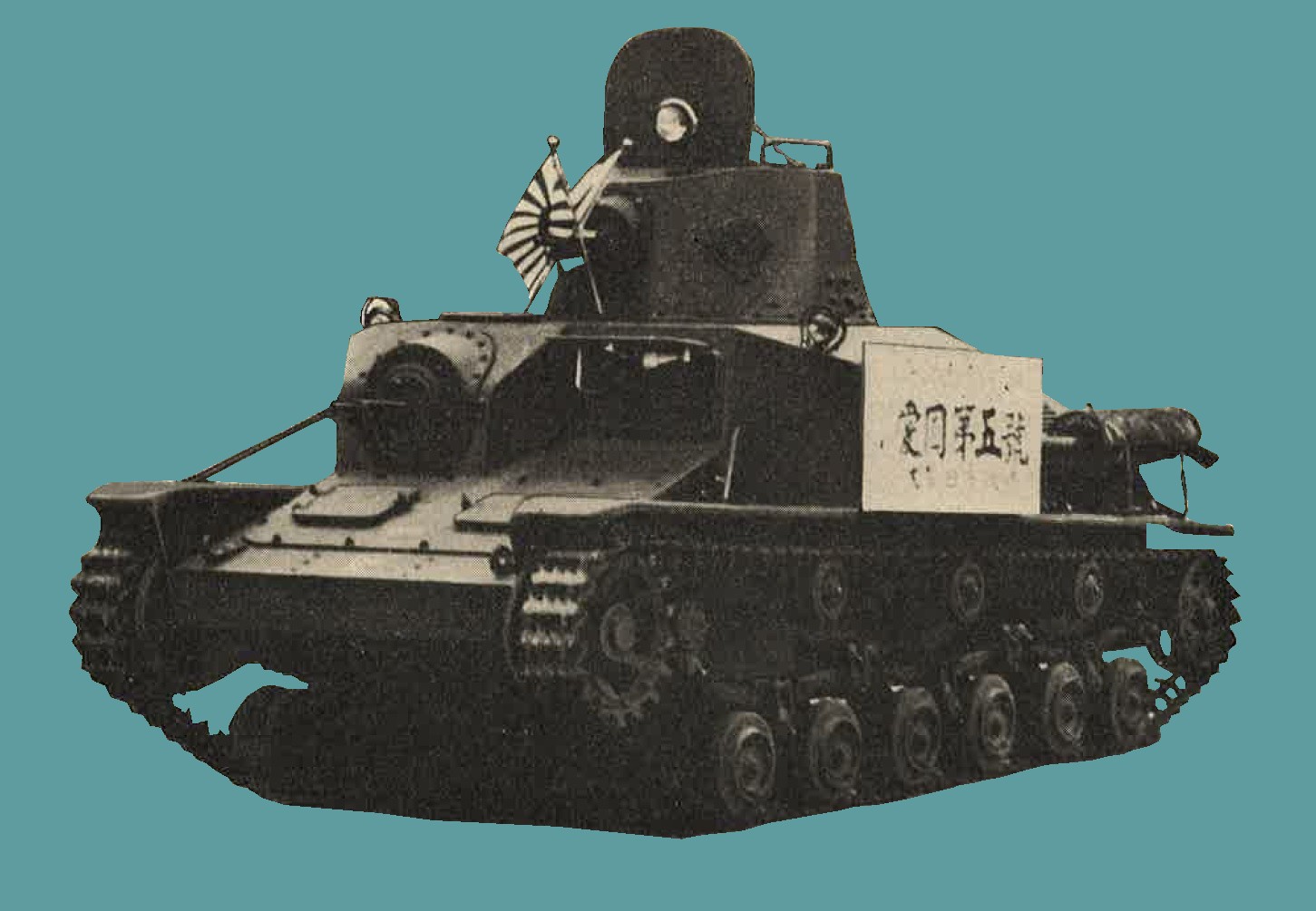 |
Approximate maximum performance
| 1. | Speed | --------- | 28 miles per hour. |
| 2. | Range of action | --------- | 125 miles. |
| 3. | Obstacles | ||
| Trench | --------- | 5 feet, 8 inches wide. | |
| Step | --------- | 1 foot, 6 inches high. | |
| Fording | --------- | 2 feet, 8 inches. | |
| Gradient | --------- | 35 degrees. |
b. Japanese Type 93 (1933) light tank (improved version).
This light tank is an improvement of model of the previously described Type 93 light tank. Although it is reported to be armed with a 37-mm gun, photographs indicate that the turret and hull have not been modified enough to accommodate that weapon. The major change is to be found in the suspension, which has been changed from the semielliptical springs to the conventional Japanese light-tank suspension - bell crank, resisted by armored compression springs. There are four bogies in pairs on each side and a large rear idler which acts as a bogie. There are two return rollers. This vehicle also employs front sprocket drive.
Approximate specifications
|
Approximate maximum performance
| 1. | Speed | --------- | 28 miles per hour. |
| 2. | Range of action | --------- | 120 miles. |
| 3. | Obstacles: | ||
| Trench | --------- | 5 feet, 8 inches wide. | |
| Step | --------- | 1 foot, 6 inches high. | |
| Fording | --------- | 2 feet, 10 inches. | |
| Gradient | --------- | 30 degrees. |
c. Japanese Light tank Model 95 (1935).
In production from 1935 to at least 1942, there is a great deal to show that Japanese light-tank design may have been frozen in 1935 to produce a great number of these tanks, in spite of the evidence pointing to the existance of a Type 98 (1938) light tank. the Type 95 light tank is a full tracked , combat vehicle. It is powered by a single, six cylinder, Diesel engine of 90 to 110 horsepower.
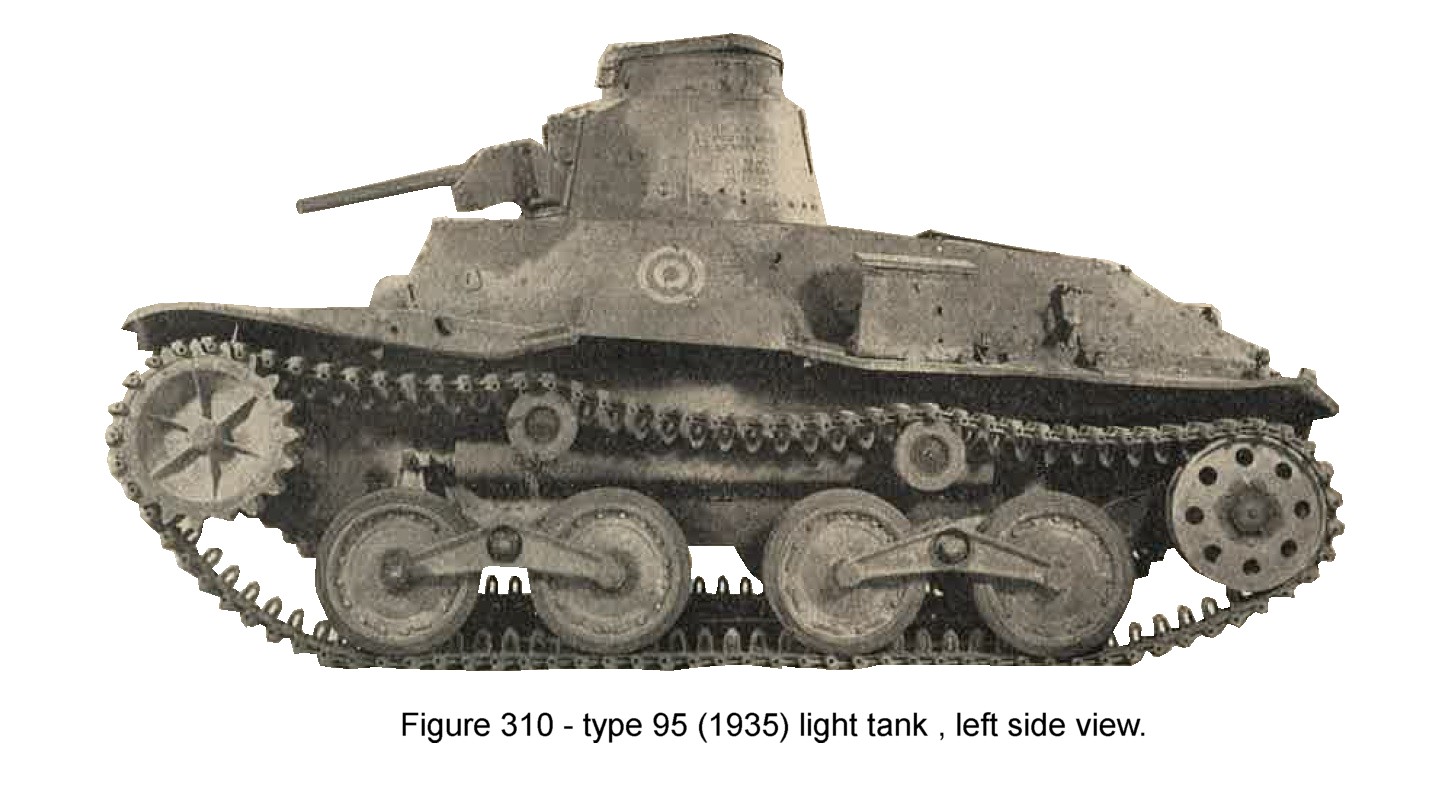 |
 |
The armament consists of one Type 94 (1934) 37-mm tank gun mounted in a steel turret and two Type 97 (1937) 7.7-mm machine guns, one mounted in the turret and one mounted forward in the hull. The crew consists of three men - a driver, an engineer, and a turret gunner.
The turret is manually operated and may be traversed 360 degrees in wither direction. The hull is riveted and bolted armor plate. There are two hatches on the front slope plate and another hatch to the right of and below the turret. When the latter hatch is closed, the only vision devices provided for the driver and engineer are small vertical and horizontal slots.
The engine is located on the right rear of the tank, in a well constructed compartment accessible from the driving compartment by a hatch which may be opened or closed at will from the inside. The engine is air-cooled; fuel and oik tanks are located at the rear of the engine compartment.
|
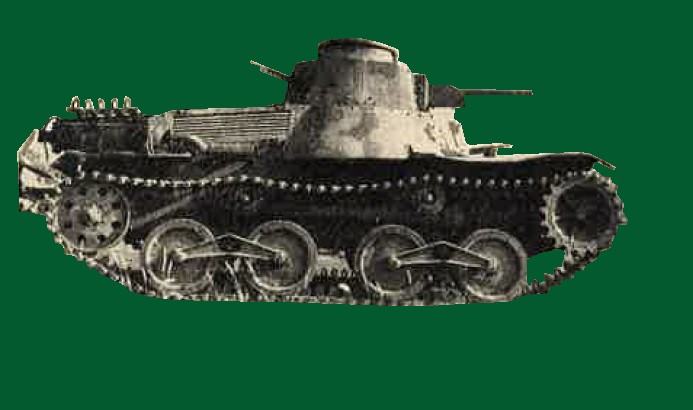
Figure 312. Type 95 (1935) light tank, right side. |
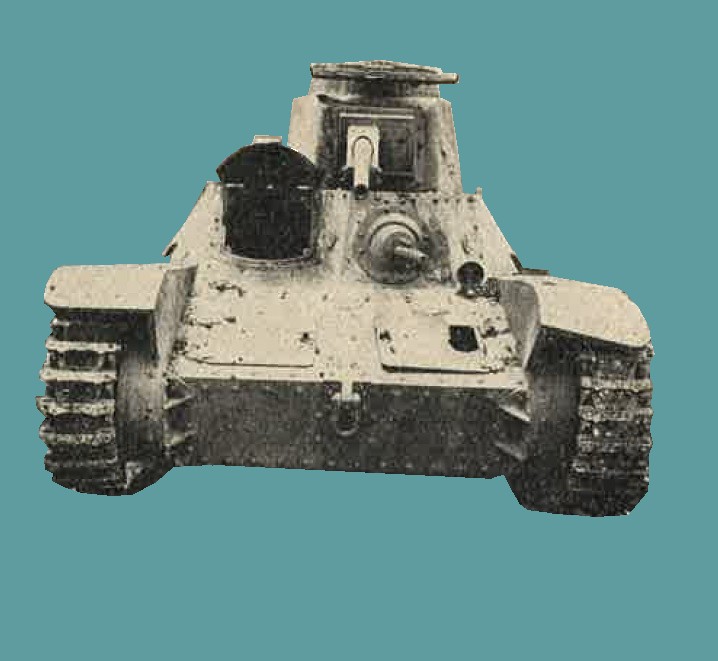
Figure 313. Type 95 (1935) light tank, front view. |
|
Both guns can be elevated 25 degrees and depressed 10 degrees from the horizontal. The turret machine gun has a free traverse of 25 degrees in either direction; the hull gun has a free traverse of 35 degrees in either direction. Besides the 37-mm gun and two machine guns, tank personnel may be equipped with hand grenades. In a tank captured in Tarawa, the turret wall was fitted with cloth pockets which held eight hand grenades.
Approximate specifications
Armor:
|
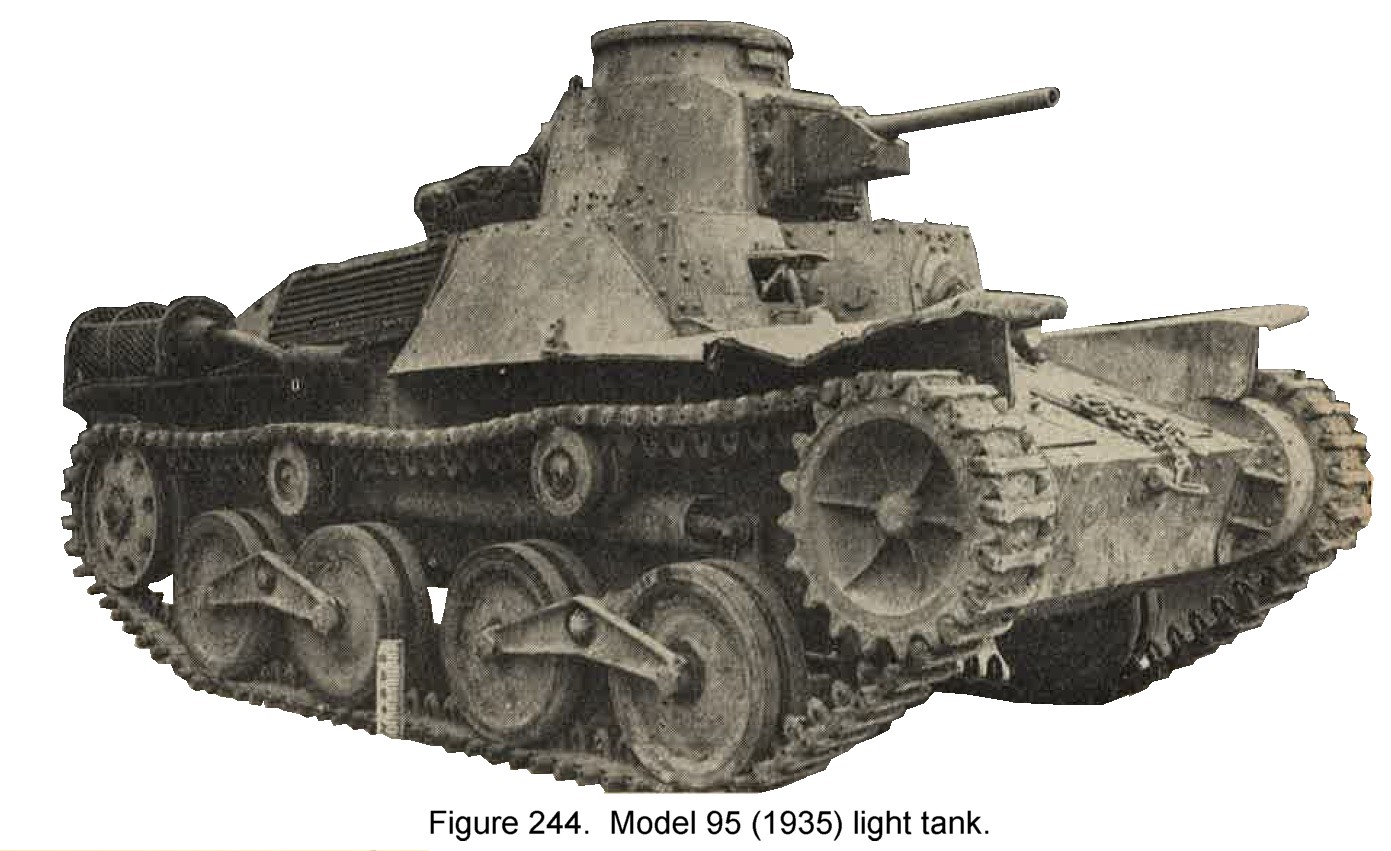 |
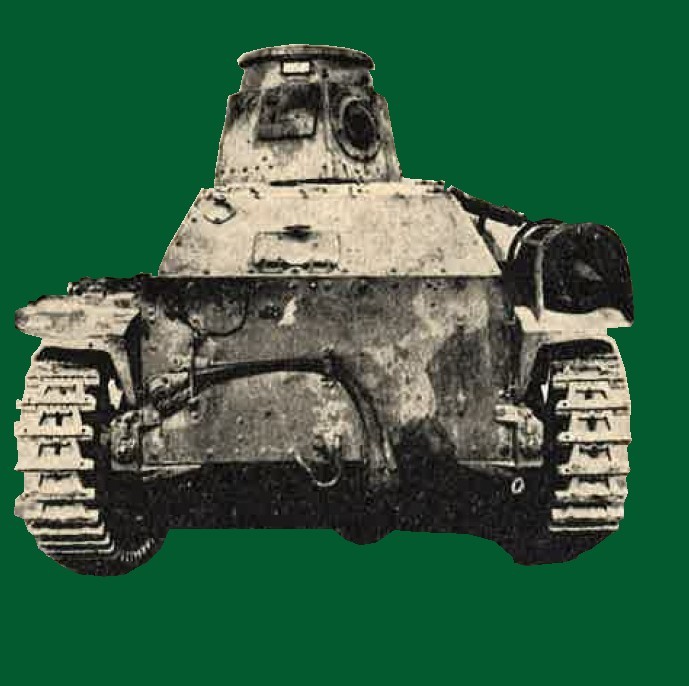
Figure 314. Type 95 (1935) light tank,rear view. |
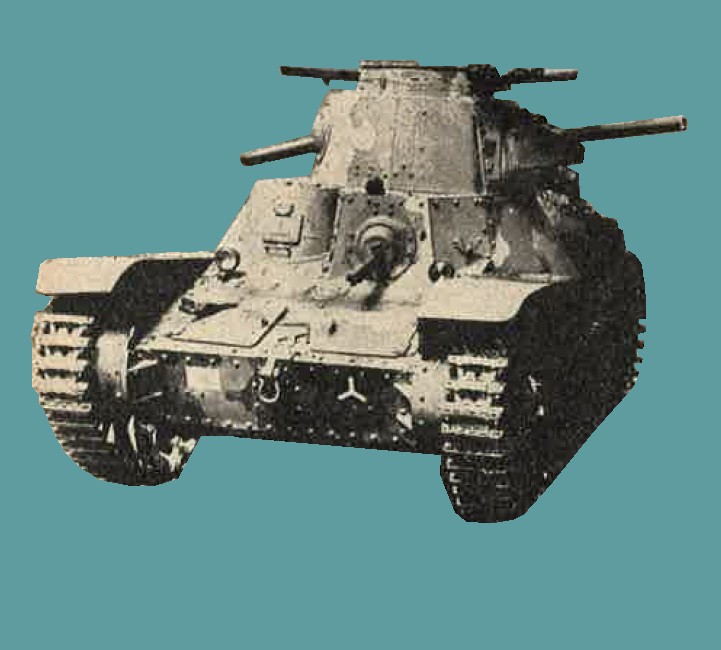
Figure 317. Type 95 (1935) light tank, showing disposition of turret 37-mm gun and 7.7-mm machine gun. |
Japanese Type 35 tank Specifications - continued:
|
Japanese Type 35 tank Engine and power plant:
|
Approximate maximum performance
|
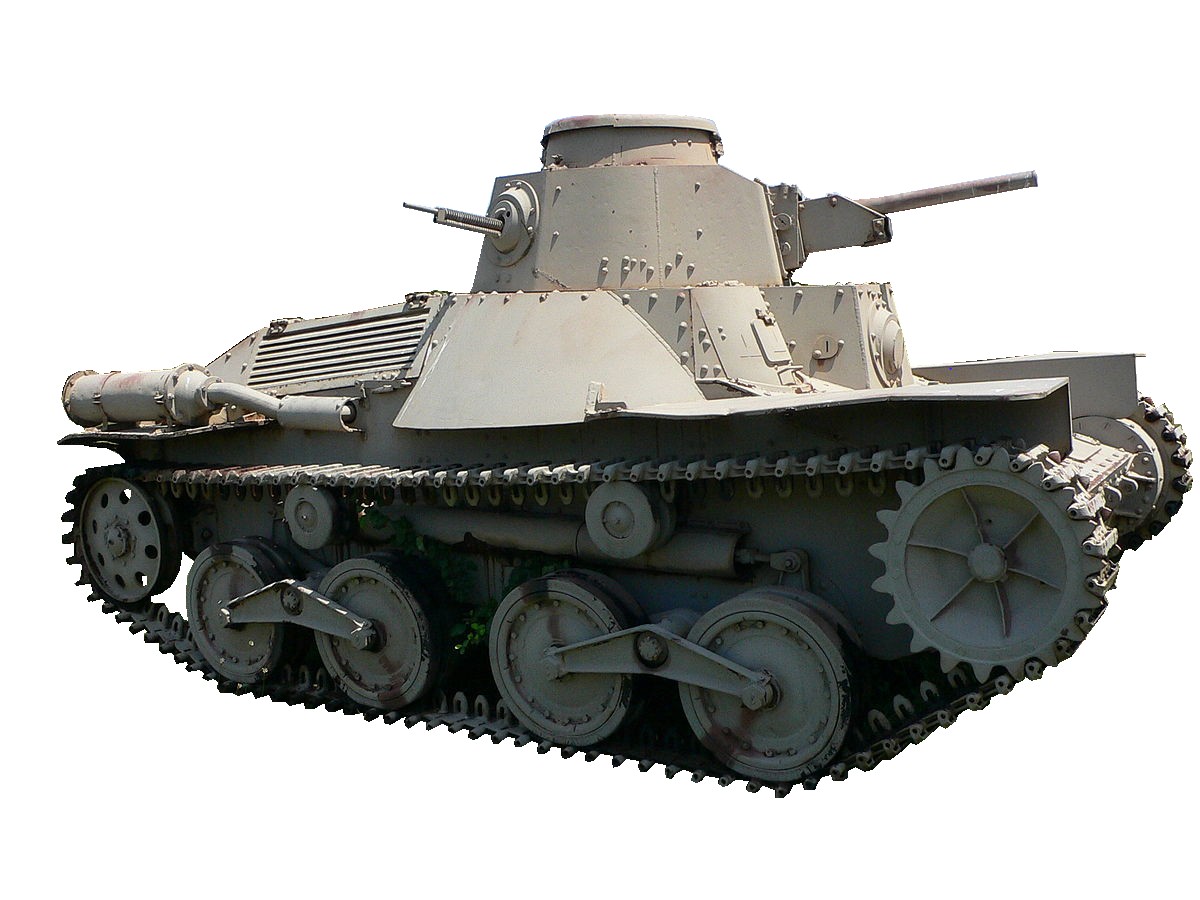 |
d. Japanese Light tank "Keni".
It must be noted that the dimensions of this tank are very much like those of teh Type 98 light tank, and it may be that this tank is a subsequent version of the Type 98. However, it is reported to be armed with a 47-mm tank gun and must be considered as a modern Japanese light tank. The armor pf this vehicle is slightly heavier than that of the Type 98 light tank, and documentary evidence relating to the engine would indicate somehat improved performance.
Approximate specifications
|
Approximate maximum performance
|

4. WWII JAPANESE MEDIUM TANKS.
a. Medium tank Model 89 A (1929).
The oldest type medium tank which has been employed by the Japanese in the current war is the Type 89A (1929).
This tank (figure 245) is characterized by its box type hull, short front plate with door to the right, vertical front plate above this with hull machine gun mounted to the right, and small cupola hinged to top of turret. Five small return rollers are mounted along a girder. There are 9 small bogie wheels. The leading bogie wheel is independently mounted, while protective skirting all but covers the suspension. This tank is rear sprocket driven and powered by a gasoline engine. There is a rear turret machine gun, while the main armament is a 57-mm low velocity gun. Traverse 360 degrees.
It is believed that this weapon has a free traverse of 20 degrees right and left and free elevation of minus 8 degrees to plus 30 degrees. In addition to the machine gun mounted in the front plate of the vehicle there is also a turret-mounted machine gun at the rear.
Approximate specifications :
|
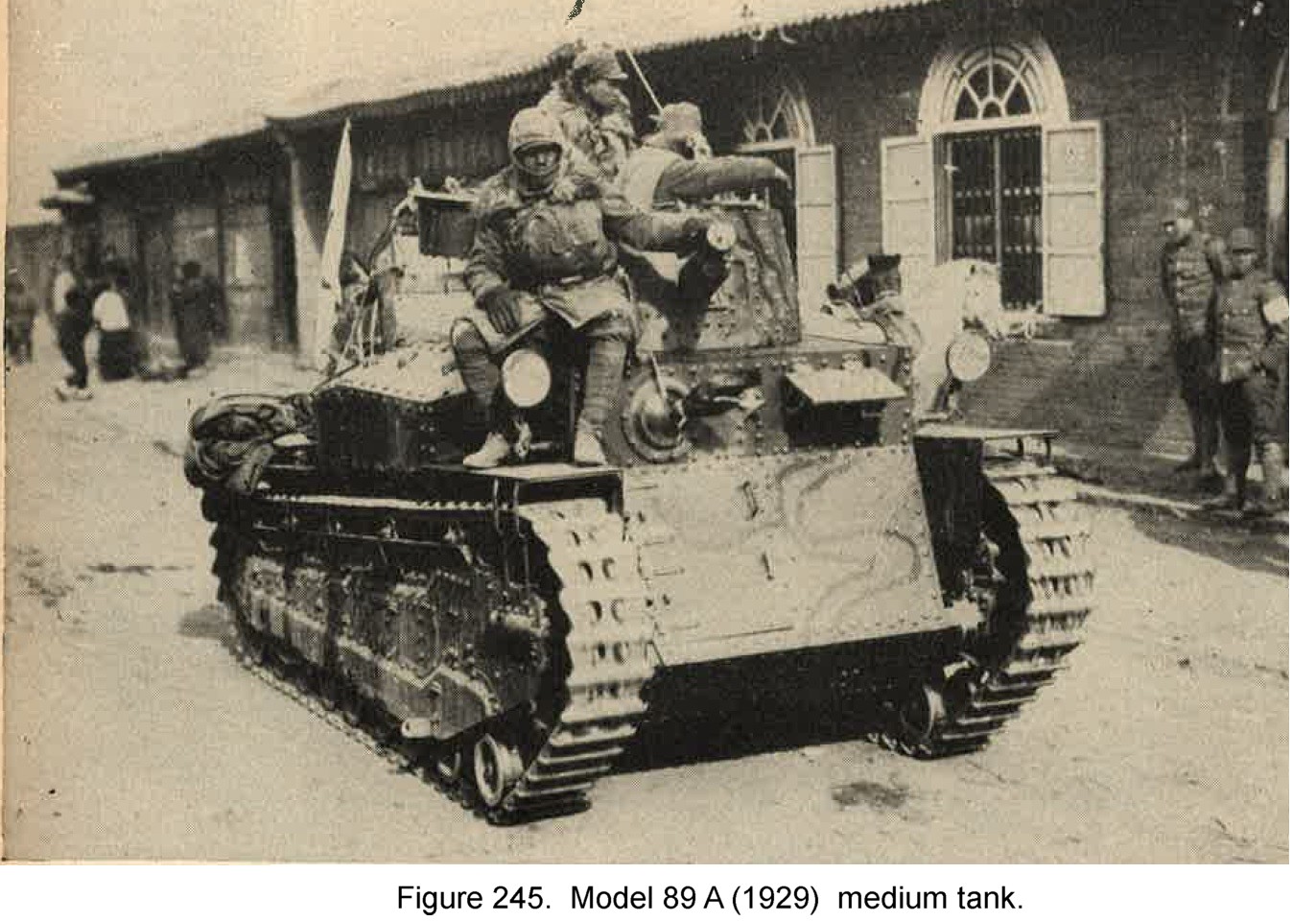
Figure 245. Model 89A (1929) medium tank. 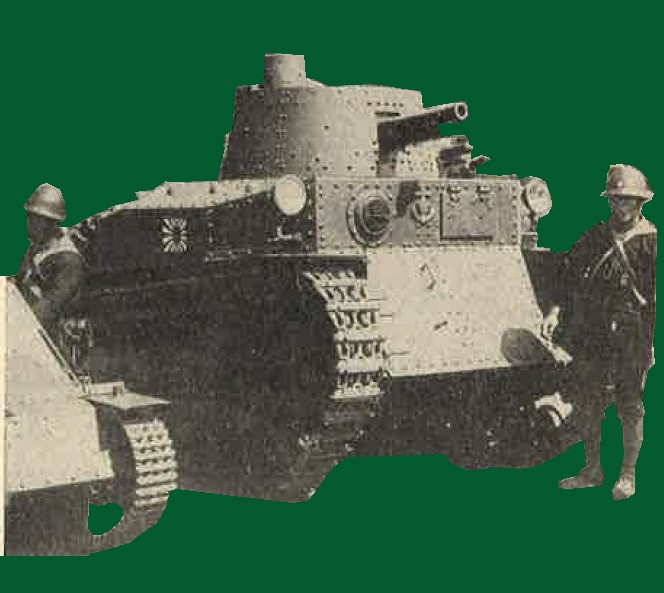
Figure 320. Type 89A (1929) Medium tank showing form of turret cupola and Navy anchor insignia. |
| 1. | Speed | --------- | 15 miles per hour. |
| 2. | Range of action | --------- | 100 miles. |
| 3. | Obstacles: | ||
| Gradient | --------- | 34 degrees. | |
| Trench | --------- | 8 feet 3 inches wide. | |
| Step | --------- | 2 feet 9 inches high. | |
| Fording | --------- | 3 feet 3 inches deep. |
b. Japanese Type 89 B (1929) medium tank.
This tank, a modification of the original Type 89A (1929) medium tank, incorporates several important changes. It has a longer front plate which is combined with the driver's front plate. The turret has been completely redesigned to accommodate a new type of cupola and to provide more satisfactory aperture for the 57-mm tank gun. It is believed that this gun has a limited free traverse of 20 degrees right and left and free elevation of minus 8 to plus 30 degrees. The gasoline engine has been replaced by a Diesel. The armor and armament are the same in this tank as in the Model 89 A.
|
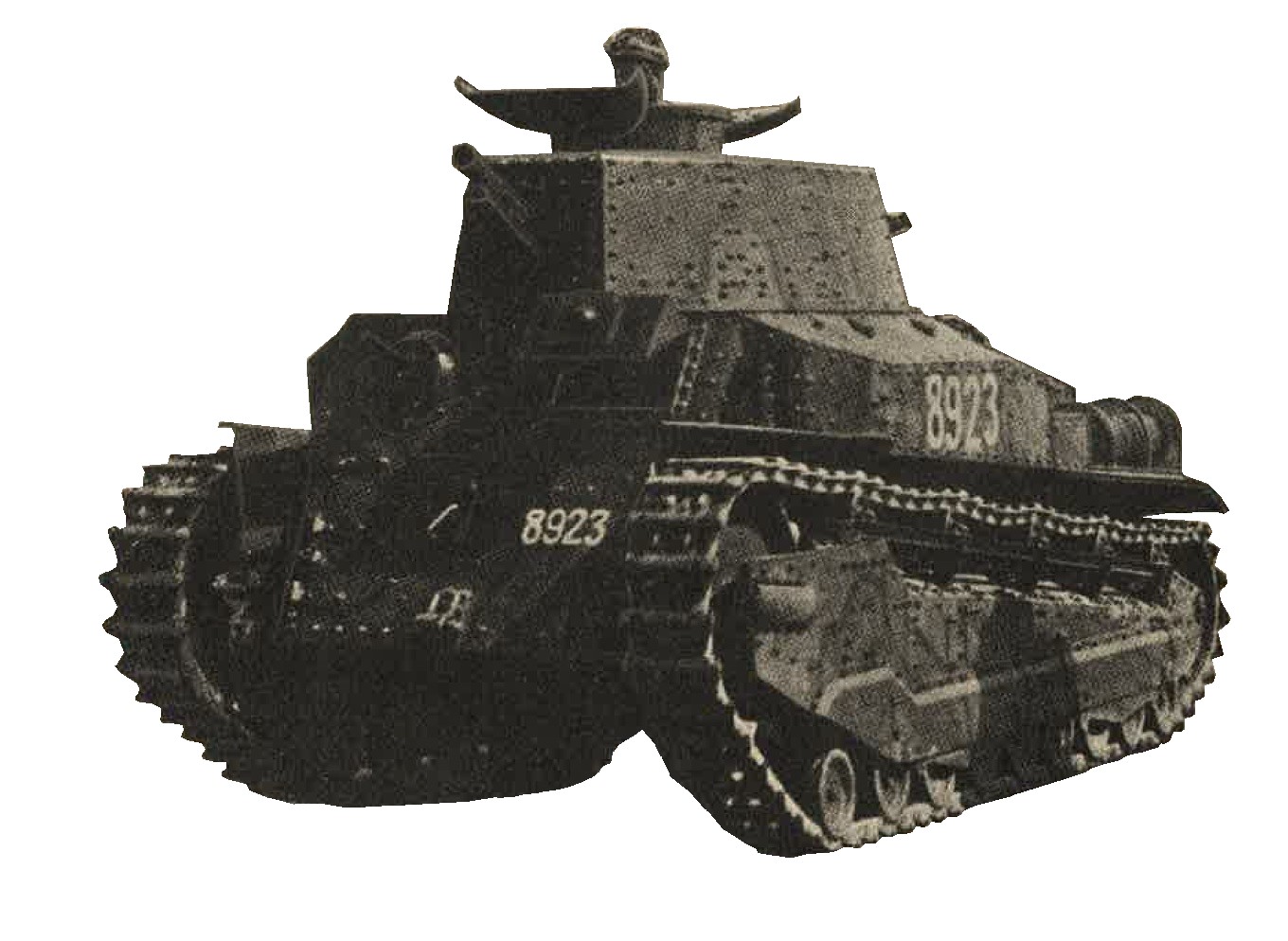 |
Approximate maximum performance:
| 1. | Speed | --------- | 15 miles per hour. |
| 2. | Range of action | --------- | 100 miles. |
| 3. | Obstacles: | ||
| Gradient | --------- | 34 degrees. | |
| trench | --------- | 8 feet 3 inches winde. | |
| Step | --------- | 2 feet 9 inches high. | |
| Fording | --------- | 3 feet 3 inches deep. |
c. Japanese Type 94 (1934) medium tank.
Although this tank is being reported as the Type 94 medium tank, there appears to be some doubt as to whether the type number of 94 is correct. The 57-mm gun has a free traverse of 20 degrees right and left, and free elevationof minus 8 degrees to plus 25 degrees.
Comparison with the Types 89 A na d B shows that the mumber of return rollers has been reduced to four, the girder has been removed, and the skirting has been redesigned. The long front plate has a door on the left, above which has been mounted a hull machine gun. The driver sits on the right. Power of the Diesel engine has been increased to 160 brake horsepower. With these exceptions, the Type 94 is practically identical with the Type 89B. This tank is often seen with a ditching trail.
Approximate specifications:
|
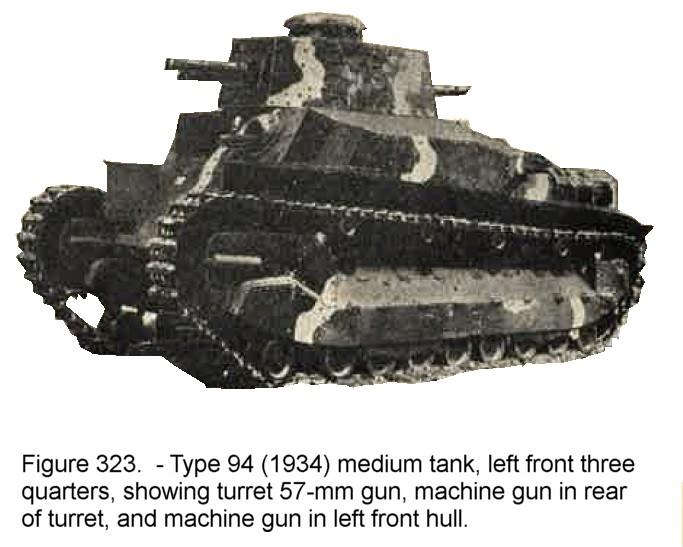 |
| 1. | Speed | --------- | 18 to 20 miles per hour. |
| 2. | Range of action | --------- | 100 miles. |
| 3. | Obstacles: | ||
| Trench | --------- | 9 feet wide. | |
| Step | --------- | 2 feet 9 inches high. | |
| Fording | --------- | 3 feet 3 inches deep. |
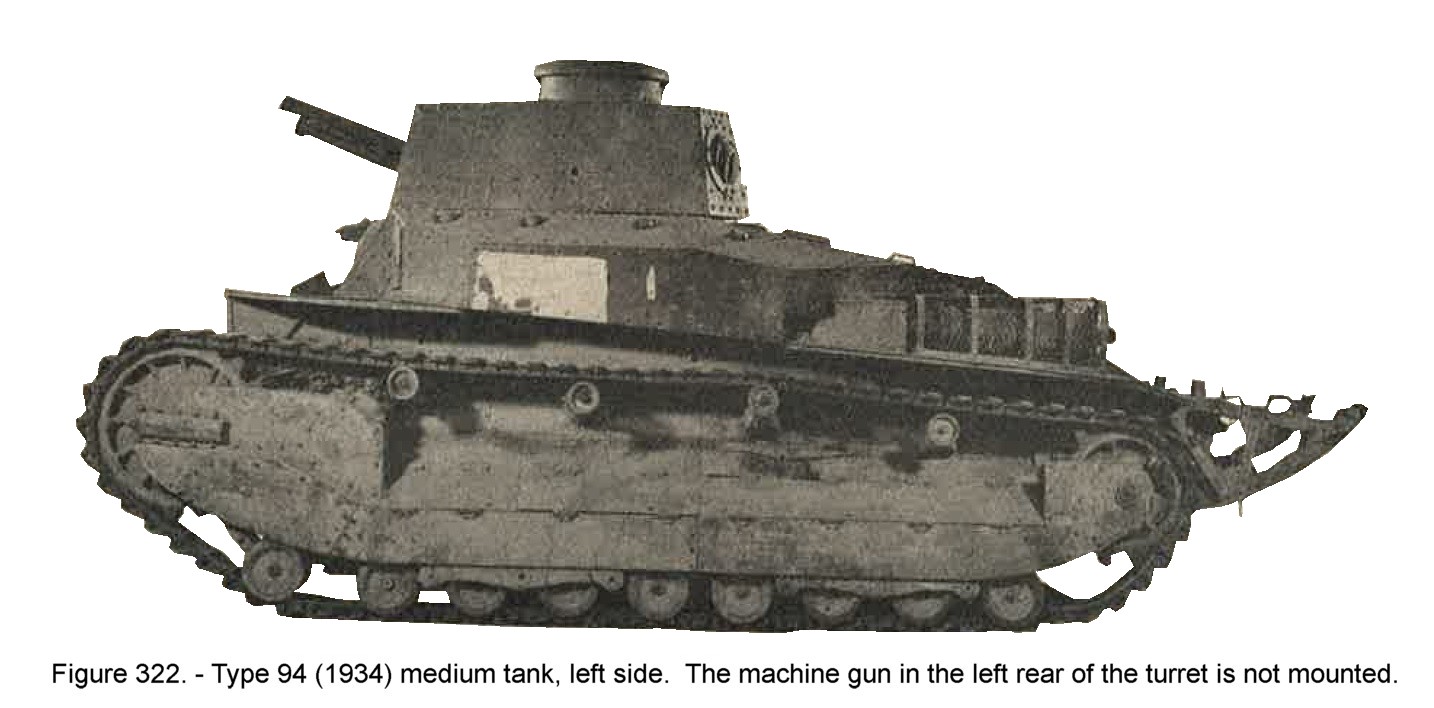 |
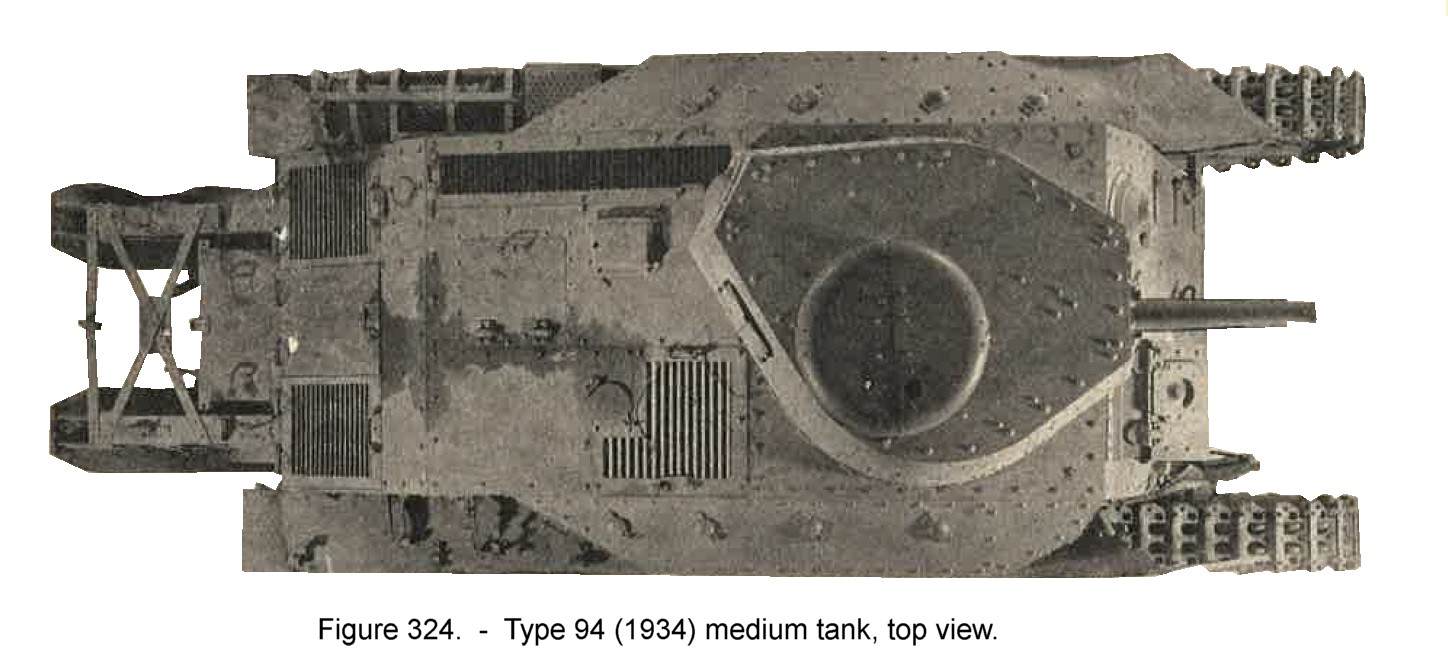 |

d. Japanese Type 97 (1937) medium tank.
The Type 97 medium tank is classed by the Japanese as a medium tank although it fights at about the same weight as the U.S. light tank M5A1. This 15-ton tank has a crew of four men;
- The tank commander.
- The turret gunner.
- The driver.
- The hull machine gunner.
The manually operated turret may be traversed 360 degrees right or left. It is constructed of bolted and riveted armor plate 1 inch to 1.29 inches thick in front and 1 inch thick on the sides and rear. The top of the turret consists of a flat plate and a cupola with an armor thickness of 0.75 inch.
The hull is also constructed of riveted and bolted armor plate, with a variation of thickness from 0.31 to 1.01 inches. The fighting compartment of the vehicle is lined wioth asbestos padding and insulation against heat.
The engine is a V-12 air-cooled, valve-in-head Diesel with removable cylinder heads. There appear to be two different types of engines for this tank:
one, "A" has been examined in captured tanks, and the other, "B" referred to in documents.
The suspension system consists of two bogies of two wheels each and an independently sprung bogie in teh front and rear. These bogie wheels are rubber tired. There are three return rollers. Like other Japanese suspensions, this is a modification of the Carden-Lloyd suspension.
The tank mounts a low velocity Type 97 57-mm tank gun in the turret, as well as one Type 97 7.7-mm machine gun in a ball mounting to the rear of the turret. There is another Type 97 7.7-mm machine gun mounted in the left front of the vehicle for the gunner. In most cases two smoke generator-dischargers will be found on the glacis plate, one on the right and one on the left. In addition, recent Type 97 medium tanks have been found with six smoke generatot-dischargers, four on the right wall of the turret and one on each side of the front glacis plate.
The smoke generators are of the carbon tetrachloride, base-emission type, and consists of a cardboard covered metal canister. The burning time is estimated at about 2 minutes, and the distance of projection about 50 yards.

Figure 332.-- Type 97 (1937) medium tank, front view. The ball mount for the hull machine gun may be seen.
Detailed characteristics:
Armament:
|
(Armor thickness may vary 5 to 10 mm) |
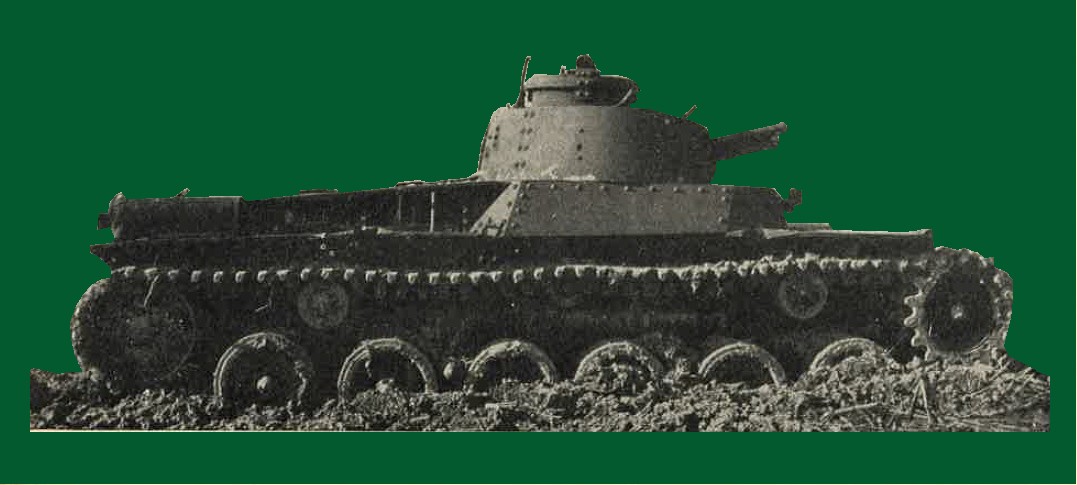
Figure 330. Type 97 (1937) medium tank, right side. The machine gun in rear of turret is not mounted.
Japanese WWII Type 97 Medium Tank - Engine "B" (Captured document)
General engine information:
|
Fuel system:
|
Lubrication system
|
Electrical system
|
Transmission:
Steering:
Driver's controls:
|
Tracks:
|
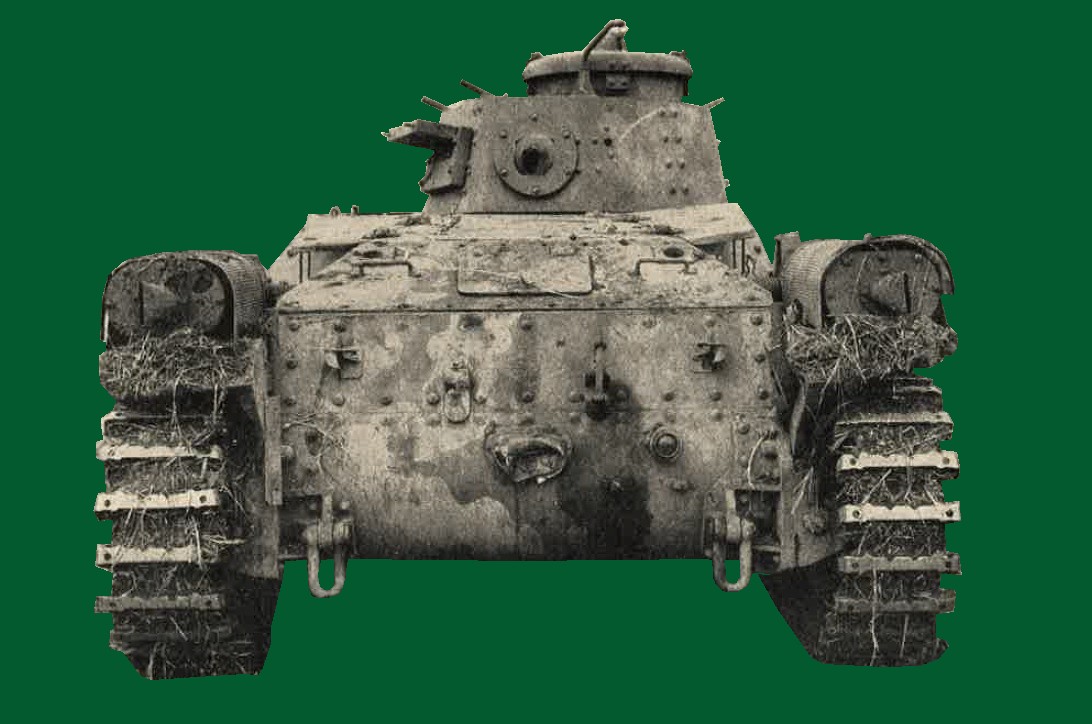
Figure 331. Type 97 (1937) medium tank, rear view. The ball mount for the rear turret machine gun may be seen.
General Engine and power plant:
| 1. | Type | --------- | V-12 air cooled, Diesel with valve-in-head. |
| 2. | Horsepower | --------- | 150 at 1,500 revolutions per minute. |
Japanese Type 97 Medium Tank - Engine "A" (Captured tank)
| 1. | Type | --------- | V-12, air cooled, Diesel with valve-in-head. |
| 2. | Bore | --------- | 107-mm. |
| 3. | Piston displacement | --------- | 17.9 liters (1,091.9 cubic inches) |
| 4. | Stroke | --------- | 166-mm. |
| 5. | Maximum rated output | --------- | 150 brake horsepower (from a captured document). Cylinder head, crank case with cooling fins, and clutch housing made of case aluminum. |
| 6. | Valve guides | --------- | Exhaust valves have bronze guides. |
| 7. | Injection and combustion chambers | --------- | Injectors arranges directly over each piston; piston heads are recessed to form turbulence chambers. |
| 8. | Cooling | --------- | Centrifugal blowers. |
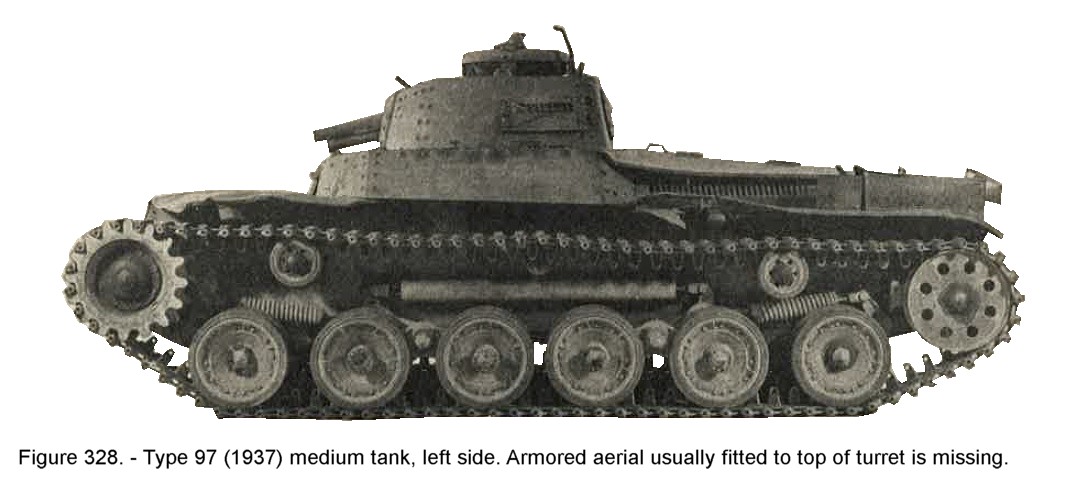
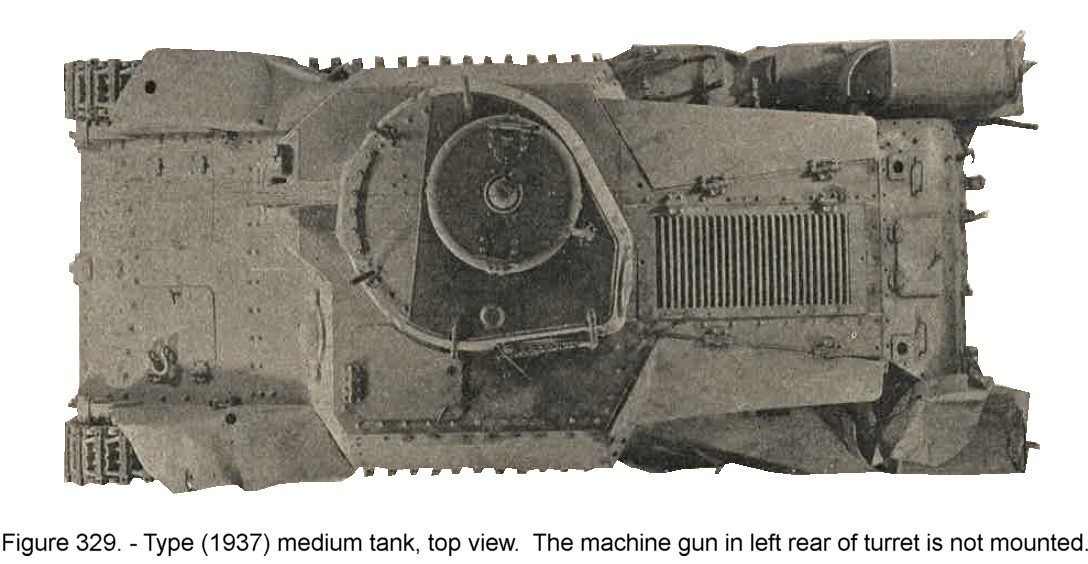
Approximate maximum performance:
|
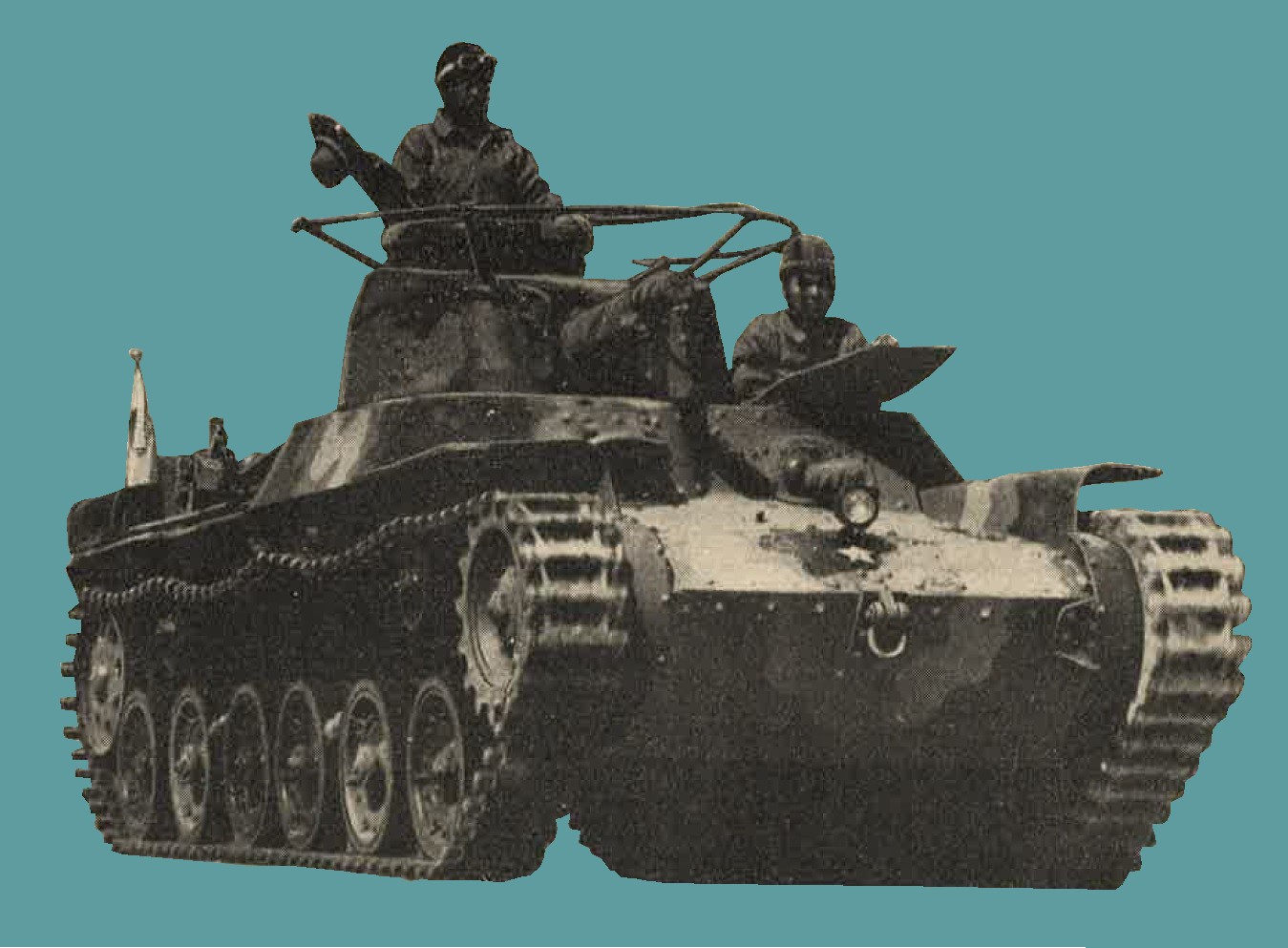 |
e. Japanese Type 97 (1937) medium tank (improved version)..
|
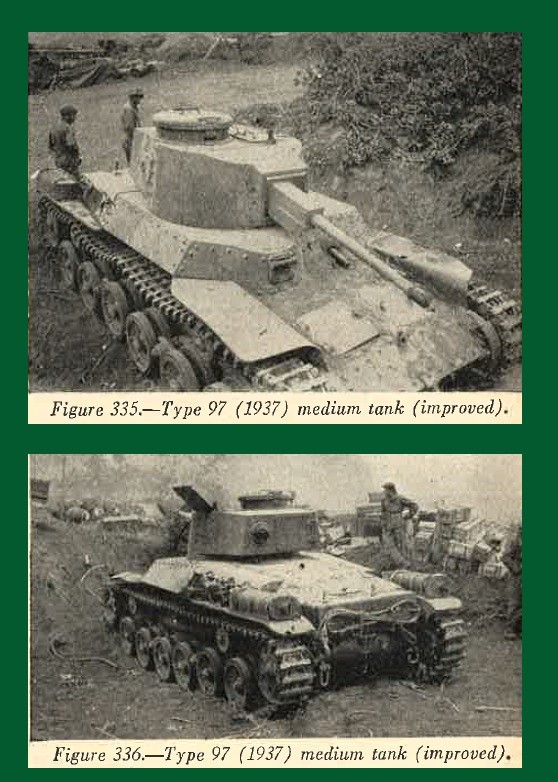 |
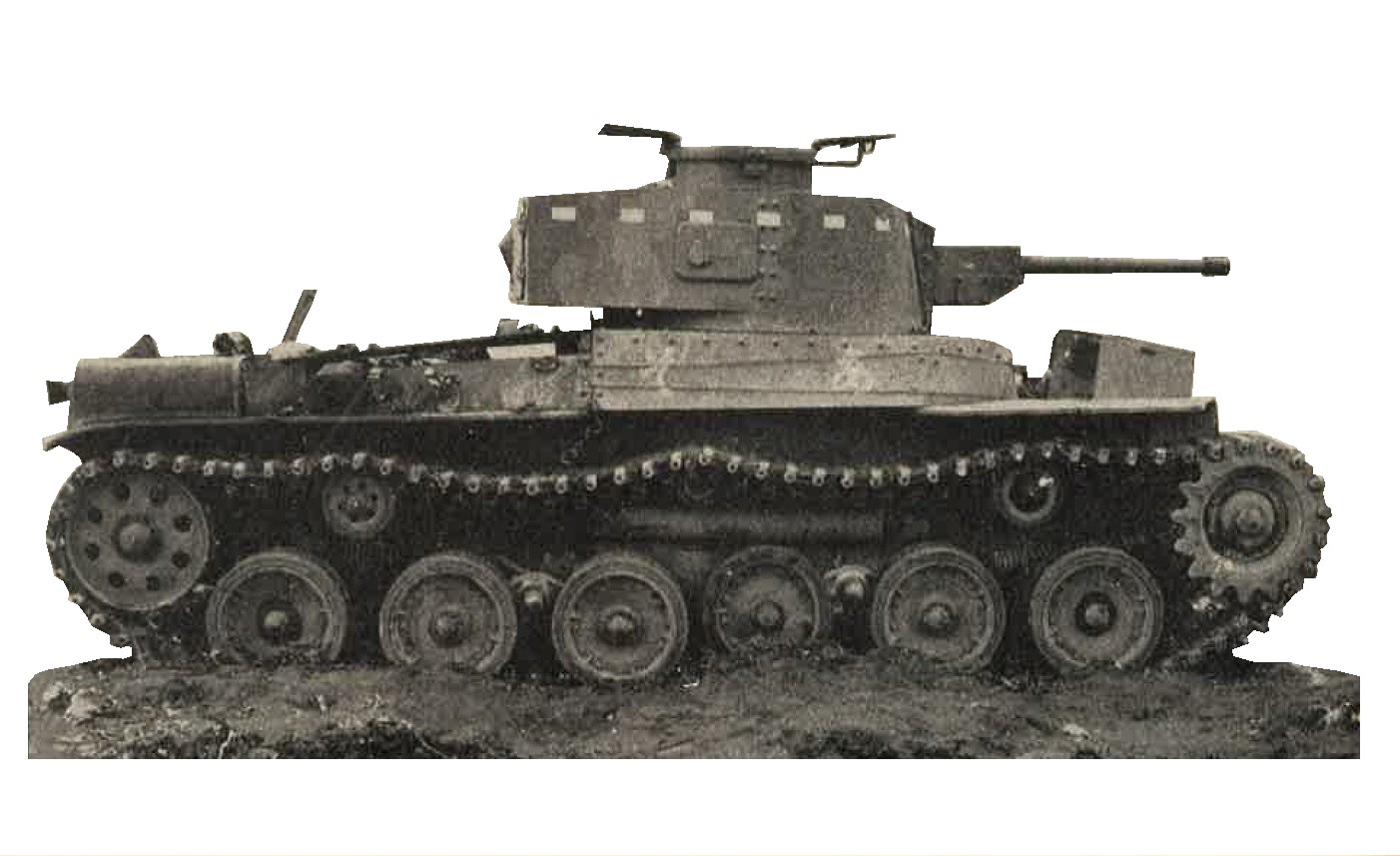
Figure 334. Type 97 (1937) medium tank (improved version), right side, with rear turret machine gun missing. |
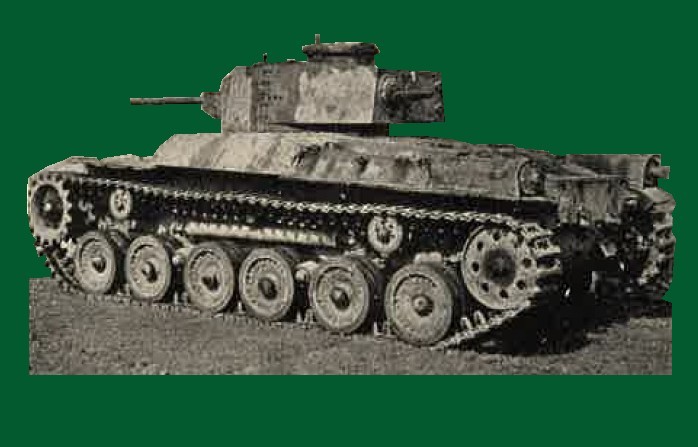
Figure 341. Type 97 medium tank (improved), left rear. |
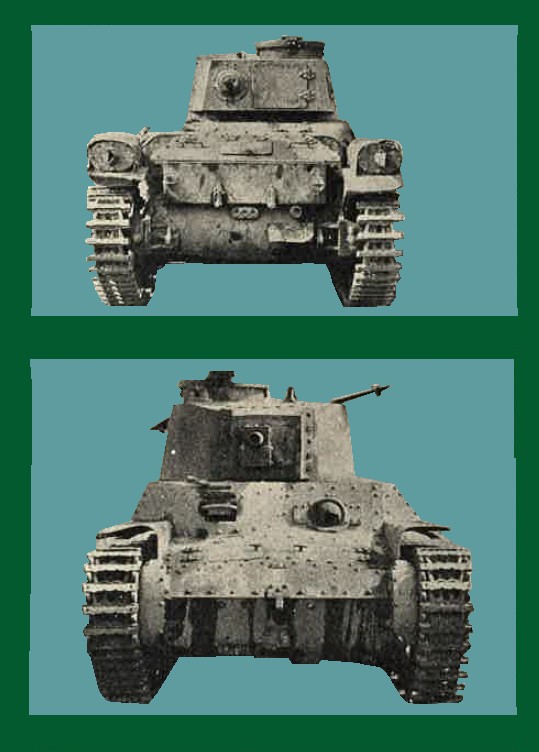
Figure 337. (Top) - WWII Japanese Type 97 medium tank (improved), rear. Figure 338. (Bottom) - WWII Japanese Type 97 medium tank (improved), front. |
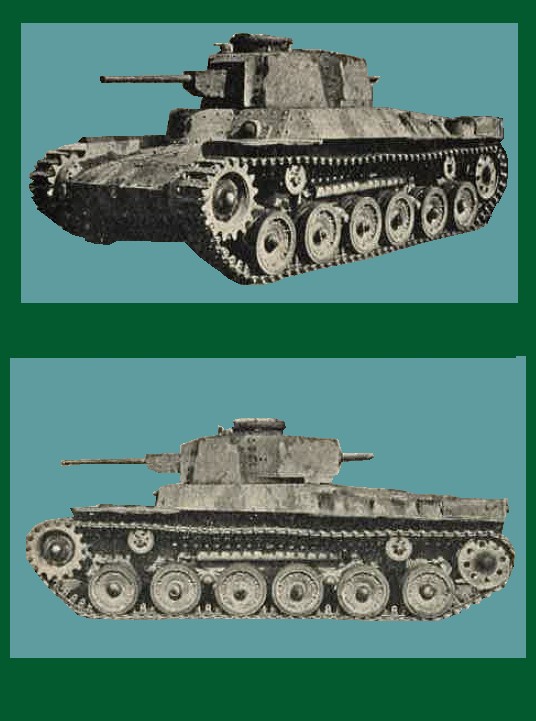
Figure 339. (Top) - WWII Japanese Type 97 medium tank (improved), left front. Figure 340. (Bottom) - WWII Japanese medium tank (improved), left side. |

5. WWII JAPANESE HEAVY TANKS.
a. Little is known of Japanese heavy tanks. however, if Japanese industry can produced them, a considerable number of heavy tanks may be met in the future. as far as can be ascertained, they have been produced only in limited numbers to date, and those reported have been characterized as clumsy, lightly armored, and poor in performance.
Some years prior to the war, Japan purchased a limited number of "heavies". The majority of these (including the 32-ton "Vickers Independent") are obsolete. In 1939 the Nomonhan Incident clearly demonstrated the inadequacy of Japanese tanks, as have the recent campaigns in the Pacific. These experiences, coupled with evidence of German influence in Japanese tank design, make it logical to assume that steps are being taken to overcome this inferiority.
b. Type 2 (1942) heavy tank. A prisoner of war stated that this tank existed in an experimetnal stage in June of 1943 and since that time had become operational, although it has not yet been encountered by Allied troops.
Approximate specifications:
| 1. | Weight | --------- | 30 tons. |
| 2. | Armament | --------- |
One Type 2 (1942) 75-mm tank gun. One Type 1 (1941) 47-mm tank gun. Three Type 97 (1937) 7.7-mm tank machine guns. (it is believed that there is a machine gun coaxially mounted with the 75-mm gun and fired by means of a solenoid). |
| 3. | Engine | --------- | Type 2, V-12, air cooled, Diesel. |
| 4. | Speed | --------- | 20 to 25 miles per hour. |
